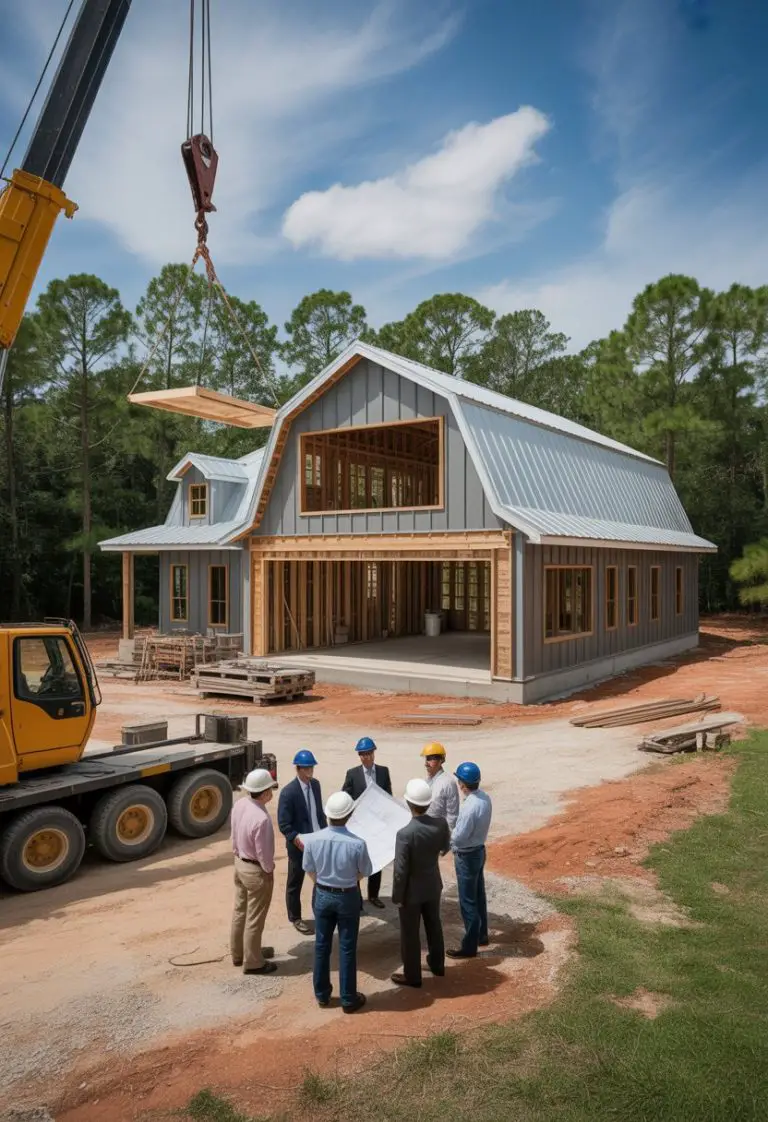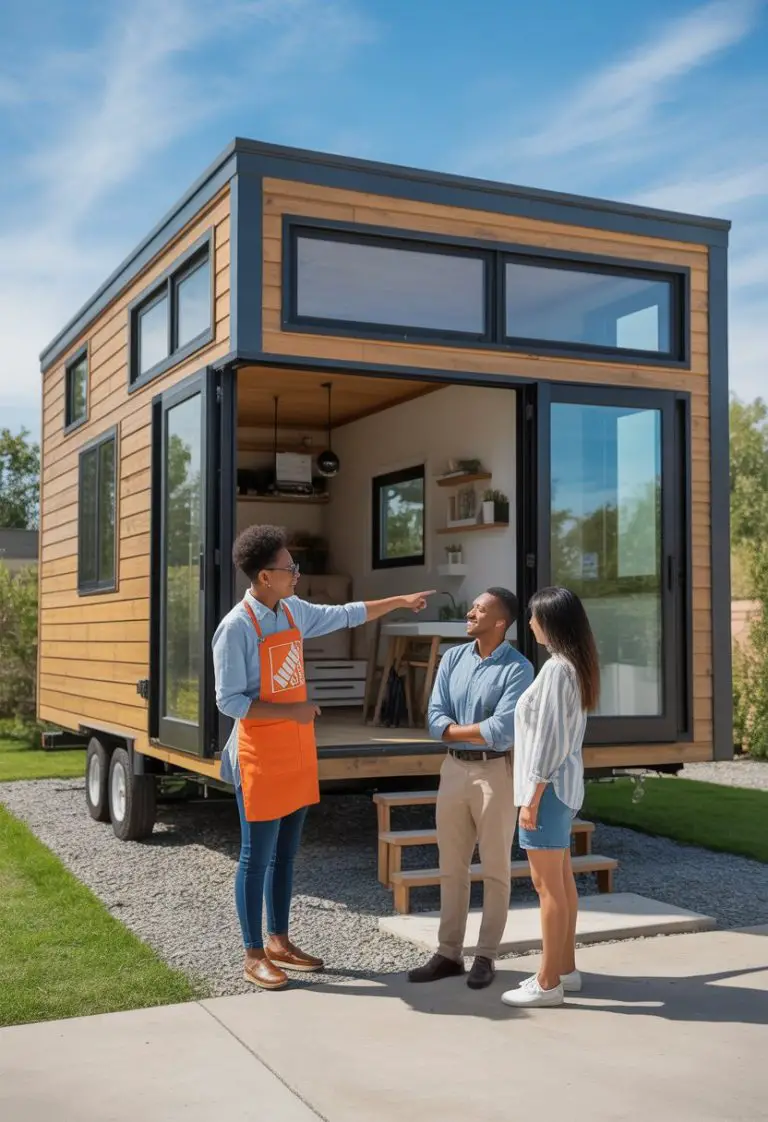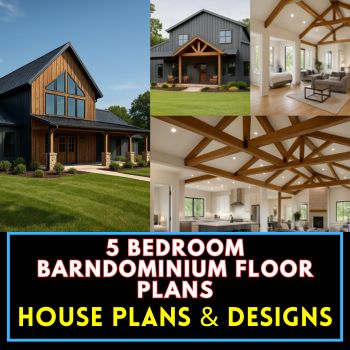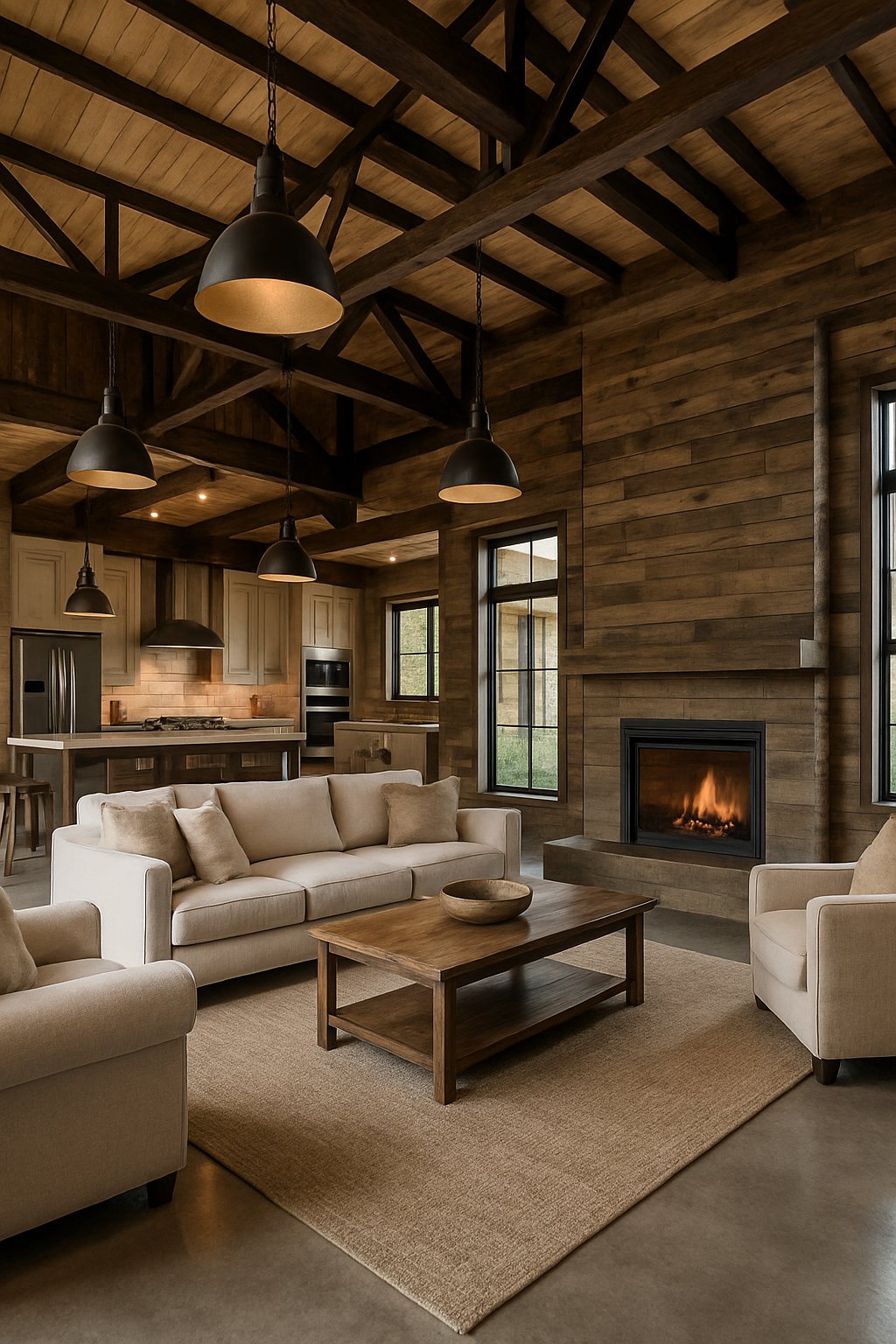Are Barndominiums Allowed in Florida? Laws, Codes & Building Guide
Barndominiums are allowed in Florida, but they must meet specific zoning rules and building codes like any other home. Builders and owners need to follow local permitting processes and residential standards to ensure the structure is safe and legal. This means the barndominium must have a permanent foundation and meet requirements for wind resistance, flood elevation, electrical, and plumbing systems.
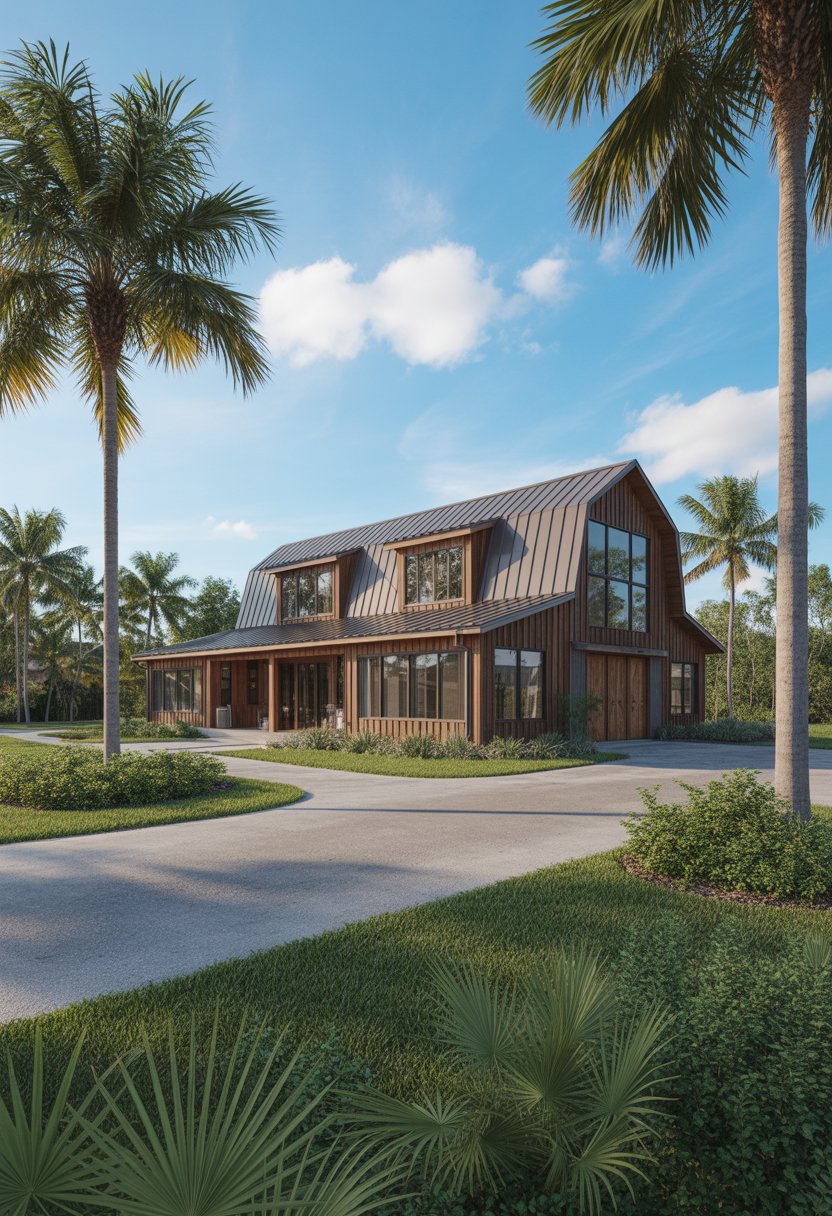
In some areas of the state, especially rural locations, zoning restrictions are more relaxed, making it easier to build a barndominium. However, in urban or suburban zones, strict architectural and land use rules may limit where and how these homes can be built. Buyers and builders should check with local authorities early to avoid surprises.
Because Florida faces unique weather challenges like hurricanes and flooding, barndominiums here require reinforced foundations and elevated living spaces. These rules help protect the home and its residents from severe weather damage, making the state’s regulations stricter than in many other places.
Are Barndominiums Allowed in Florida?
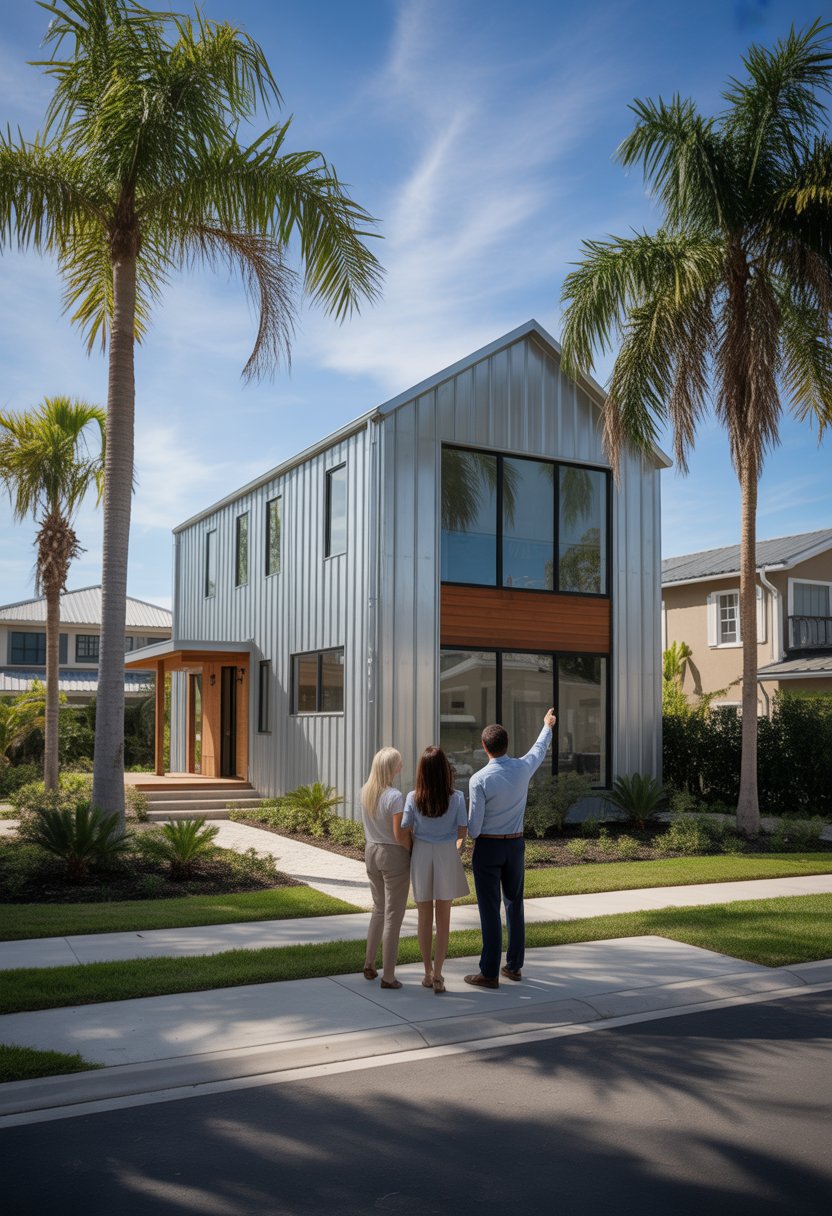
Barndominiums are permitted in Florida but must meet strict building codes and zoning rules that vary widely. The rules depend on local governments and often focus on safety and land use. These regulations can make building a barndominium easier in some areas and harder in others.
Legal Status Across the State
Barndominiums are legal in Florida as long as they follow state and local building codes. Florida’s statewide codes focus heavily on structural safety because of hurricanes. This means barndominiums must have permanent foundations, like reinforced concrete slabs, piers, or ground anchors.
Agricultural pole barns don’t face the same foundation rules, but barndominiums designed as homes do. The building also must be compliant with residential construction standards. Overall, Florida’s laws support barndominiums but require them to be built like houses, not simple barns.
County and City Zoning Considerations
Zoning laws vary widely across Florida’s many counties and cities. Rural counties such as Levy have fewer restrictions, making it easier to build barndominiums. Urban or suburban areas like Miami-Dade often have stricter zoning that may limit or prohibit these structures.
Local governments control land use rules, including lot size, building type, and allowed uses. Many locations require connection to city services such as sewage, which adds requirements. It is important for builders to check zoning maps and ordinances before planning a barndominium.
Common Misconceptions
Some believe barndominiums are not allowed in Florida or must be built like traditional homes. While they must meet home construction codes, barndominiums can still feature metal framing and open floor plans.
Another misconception is that barndominiums don’t need formal foundations. In Florida, permanent foundations are mandatory for residential use to meet hurricane and safety standards. Also, some think they are only suitable in rural areas, but they can be built anywhere zoning allows.
Understanding these details helps avoid issues during permitting and construction.
Florida Building Code and Construction Requirements
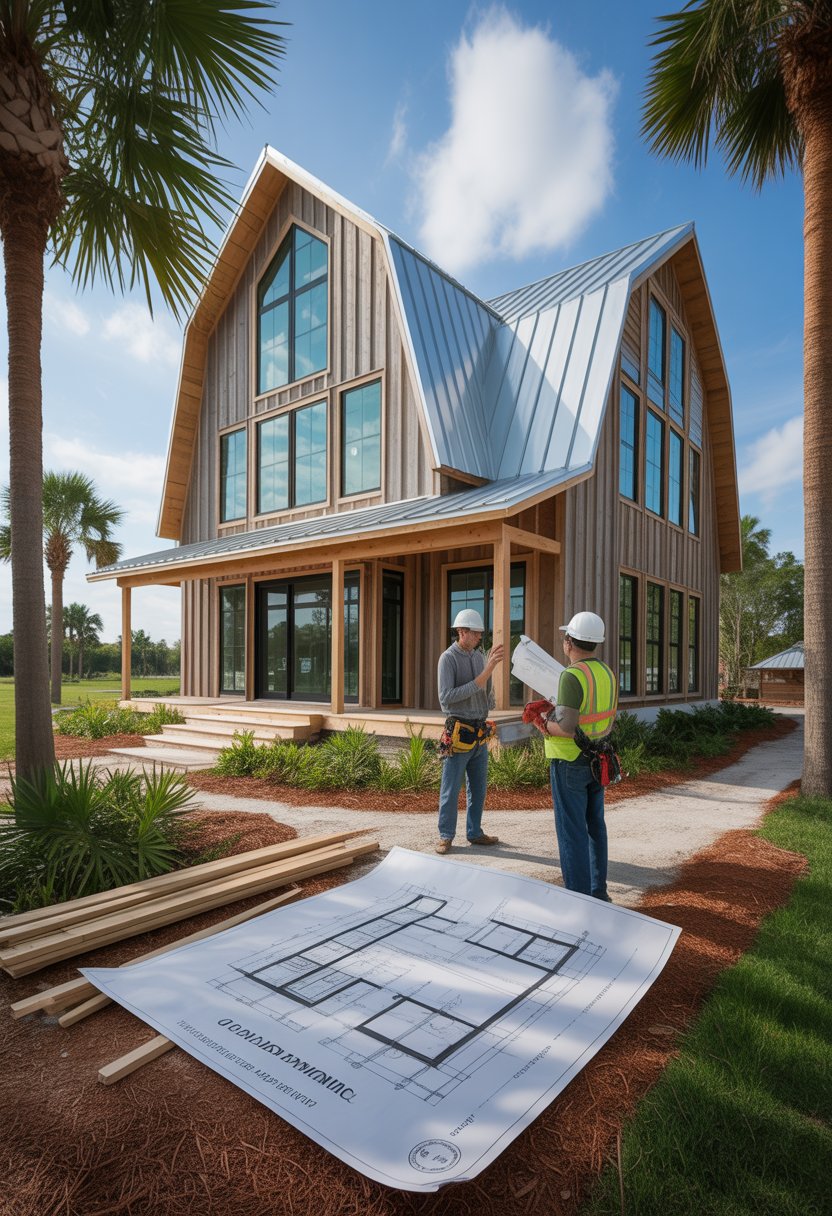
Building a barndominium in Florida requires strict adherence to specific codes and detailed processes. These rules ensure the structure is safe, resilient, and compliant with state and local regulations. The construction must meet standards for permits, wind and flood resistance, and overall building safety.
Overview of Florida Building Code
The Florida Building Code (FBC) is a comprehensive set of rules governing all new construction, including barndominiums. It covers structural integrity, electrical systems, plumbing, fire safety, and energy efficiency.
Barndominiums must be built to the same standards as traditional homes. The FBC applies strict rules to dimensions, ventilation, egress, and materials used. Foundations cannot be simple posts on dirt, but need permanent concrete slabs or reinforced piers to meet residential safety.
The code also requires that all living spaces comply with the state’s residential requirements. This means full kitchens, bathrooms, proper insulation, and sound structural systems must be incorporated into barndominium designs.
Permitting Process and Documentation
Before construction, obtaining all necessary permits from the local building department is mandatory. This process includes submitting detailed plans showing compliance with the Florida Building Code.
The plans must be reviewed and approved to ensure the barndominium meets all zoning and building rules. In some counties, additional permits for plumbing, electrical, and mechanical work are also required.
Documentation must also confirm adherence to flood elevation requirements and hurricane safety standards. Building inspections take place at various stages — including foundation, framing, electrical, and final occupancy — to verify compliance before construction continues.
Wind, Flood, and Hurricane Standards
Florida faces unique natural challenges, so the building code includes tough requirements for wind, flood, and hurricane resistance. Barndominiums must withstand high wind speeds, often reaching hurricane force.
Foundations must be reinforced with ground anchors to prevent uplift during storms. Roofs and walls require special framing and strong connections to resist wind damage.
For flood zones, finished floors must be elevated at least one foot above the 100-year flood level. This prevents water damage and is critical for both safety and permit approval.
These standards vary by county but generally exceed those in other states. Meeting them is crucial to building a durable barndominium in Florida’s environment.
Local Regulations and Site Selection
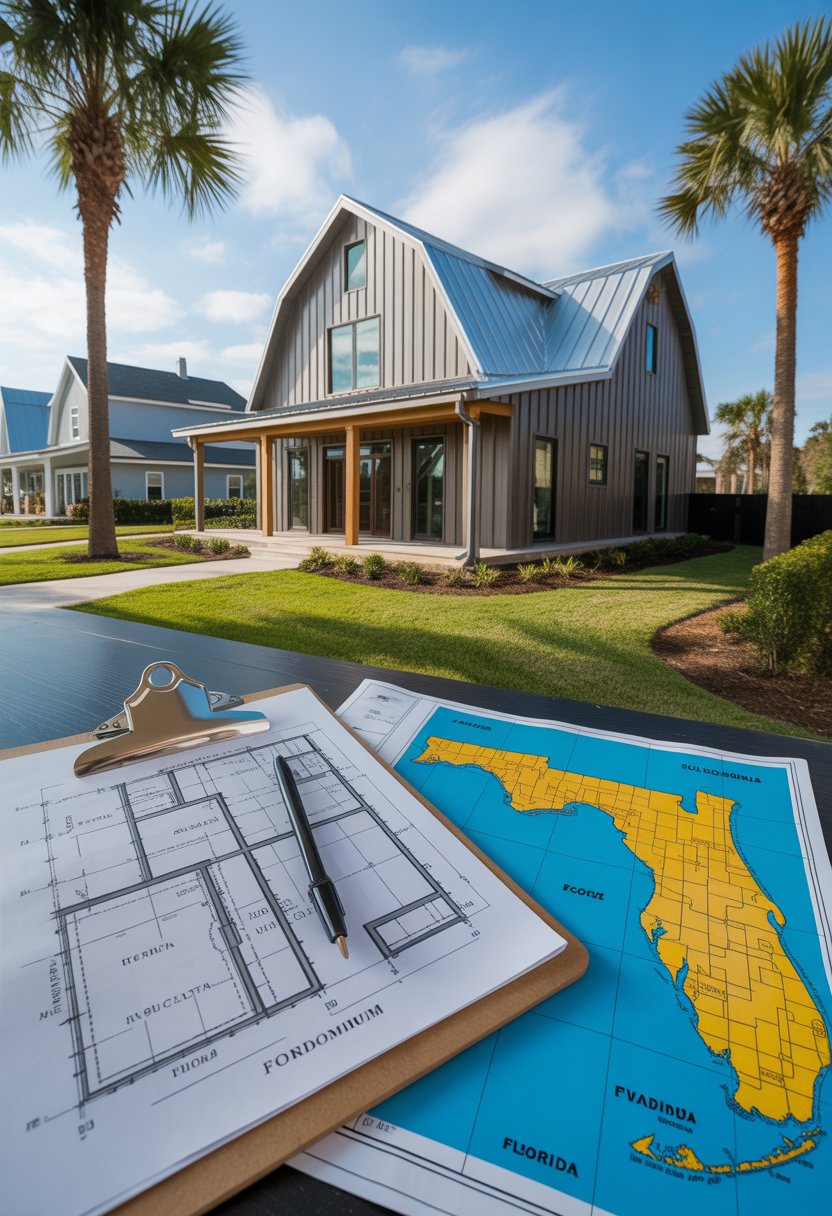
Building a barndominium in Florida requires careful attention to local rules and property conditions. These rules vary widely depending on location and land agreements. Understanding these details upfront helps avoid costly setbacks and ensures the barndominium meets all legal standards.
Zoning Laws in Rural vs. Urban Areas
Zoning laws in Florida differ greatly between rural and urban areas. In rural counties, such as Levy or parts of Central Florida, barndominiums are often allowed with fewer restrictions. These areas typically permit agricultural or metal buildings, making it easier to build a barndominium.
In contrast, urban and suburban areas like Miami-Dade or Tampa have stricter zoning rules. Many residential zones in these places prohibit structures that look like barns or have industrial materials, such as steel exteriors. These areas may also enforce limits on building height, lot coverage, and require strict adherence to residential design standards.
It is essential to contact the local zoning office to confirm whether a barndominium is allowed on a specific parcel. Early review prevents problems and ensures the proposed design fits zoning requirements.
Deed Restrictions and Covenants
Many properties, especially in planned communities or subdivisions, have deed restrictions or covenants that affect what can be built. These rules often limit building types, materials, colors, or the overall appearance of homes. Barndominiums with a barn-like look or metal siding may violate these restrictions.
Homeowners associations (HOAs) are common in Florida and may have additional rules that barndominiums must meet. Sometimes HOAs prohibit any structure that doesn’t match traditional home designs.
Reviewing deed restrictions and HOA covenants is a critical step before buying land or starting construction. Failing to comply can lead to fines or forced removal of non-conforming structures. Engaging a local real estate professional or attorney can help identify these restrictions early in the process.
Key Considerations Before Building a Barndominium in Florida
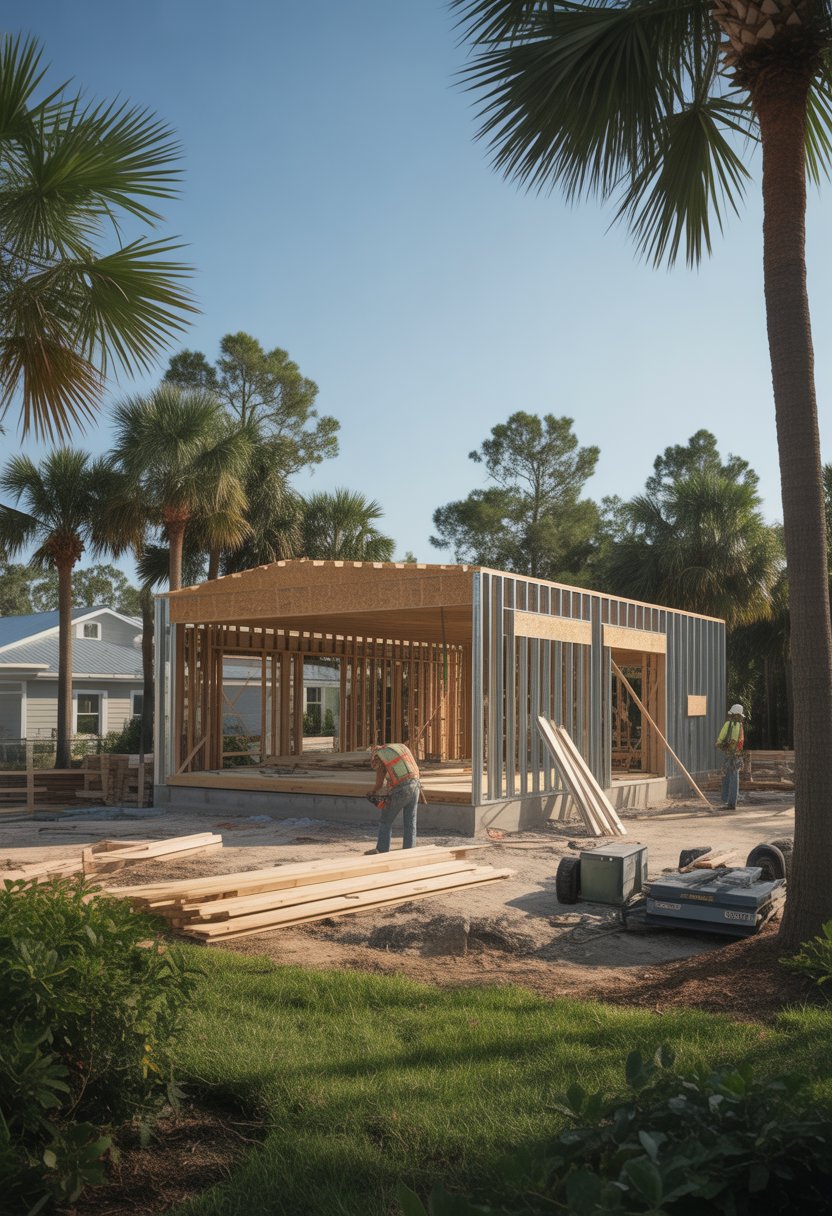
Building a barndominium in Florida requires careful attention to local rules and costs. The design must meet strict safety standards due to hurricanes and humidity. Choosing the right builder, understanding expenses, and knowing the pros and cons are critical steps.
Hiring Qualified Barndominium Builders
It is important to hire builders who know Florida’s building codes, especially for hurricane resistance. Licensed contractors familiar with barndominiums ensure the design meets local zoning and safety requirements.
Builders should have experience with permanent foundations like reinforced concrete slabs, which are required for barndominiums. Using steel frames and other sturdy materials is common to handle wind and humidity.
Working with a qualified builder reduces delays caused by permitting and inspections. They can also help navigate the complex requirements for building permits and residential codes.
Cost Factors and Financing
The cost to build a barndominium in Florida ranges from $95 to $185 per square foot. Costs are highest in coastal areas with stricter hurricane codes. Factors affecting price include materials, foundation type, size, and local labor rates.
Financing can be difficult since barndominiums are less common than traditional homes. Builders often advise securing financing before buying land to avoid complications during construction.
Budgeting should also include permit fees, impact fees, and potential site preparation costs like flood protection or clearing land.
Benefits and Limitations
Barndominiums offer open floor plans and a mix of durability and rustic style. They can be energy-efficient and built to withstand Florida’s hurricanes.
However, strict local codes limit design flexibility. Permanent foundations and storm-resistant features add to the complexity and cost. Financing challenges and longer approval times may also slow down building.
Choosing a barndominium means balancing the desire for a unique home with the realities of Florida’s climate and regulations.
Frequently Asked Questions
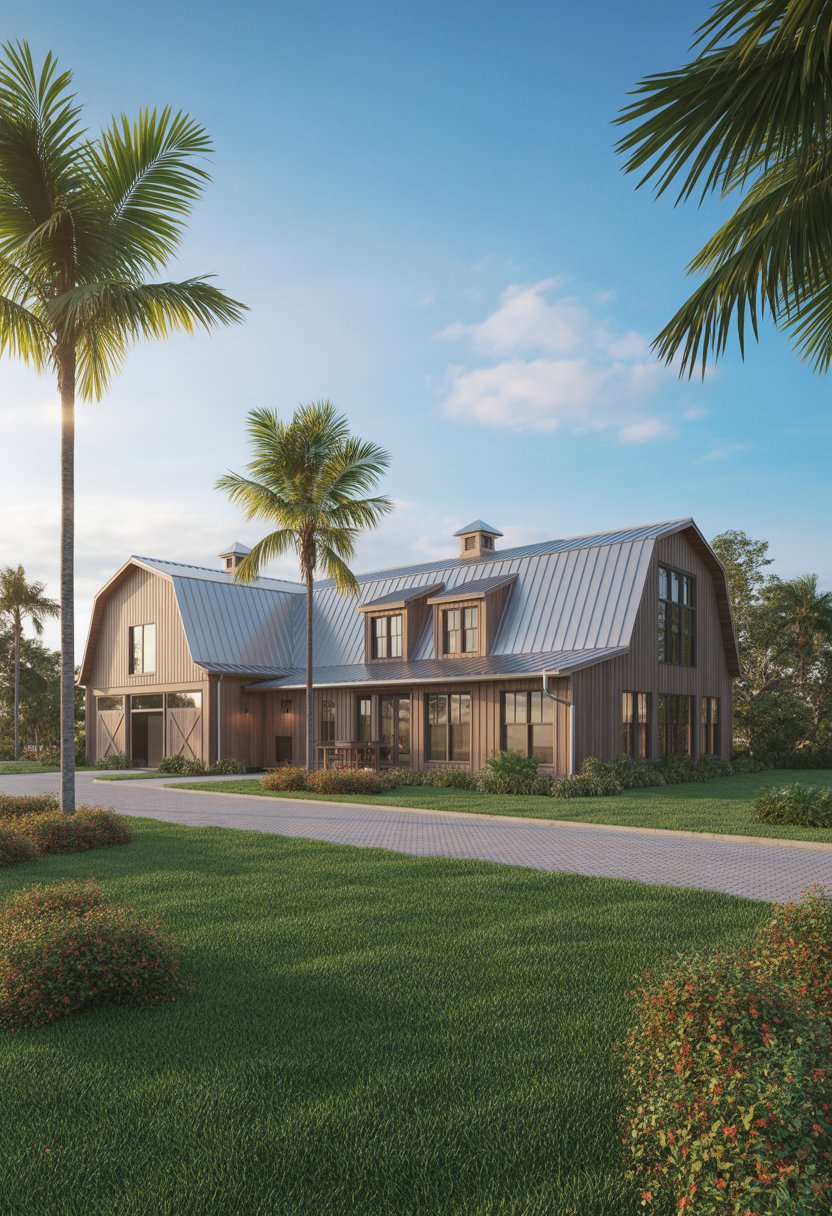
Barndominiums in Florida must meet local zoning and building rules. Costs vary but can be lower than traditional homes. They need strong hurricane resistance and proper insurance. Finding qualified builders depends on the area, especially in central Florida where codes are strict.
What are the zoning requirements for building a barndominium in Florida?
Zoning rules differ by county and city. Some areas allow barndominiums in rural or agricultural zones but not in residential neighborhoods. Approval often requires meeting land use plans and setbacks.
How do barndominium construction costs compare to traditional homes in Florida?
Barndominiums usually cost between $95 and $185 per square foot. This can be less than typical homes due to simpler structures. Coastal areas may see higher costs because of stricter hurricane standards.
Can barndominiums withstand Florida’s hurricane-prone climate?
Yes, if built to hurricane-resistant codes. These rules include reinforced roofing, impact-resistant windows, and strong foundations. Compliance is essential to ensure safety during storms.
What are the insurance considerations for barndominiums in Florida?
Insurance rates depend on location, building materials, and compliance with hurricane codes. Some insurers may charge more for non-traditional homes, so verifying coverage options is important before building.
Where can I find reputable barndominium builders in Florida?
Experienced builders typically have knowledge of local codes and hurricane requirements. Searching through local construction associations and online reviews helps find trusted contractors with barndominium experience.
Are there specific building codes that apply to barndominiums in central Florida?
Yes. Central Florida enforces Florida Building Code standards for single-family homes, which include electrical, plumbing, wind resistance, and fire safety rules. Builders must follow these closely to get permits.

